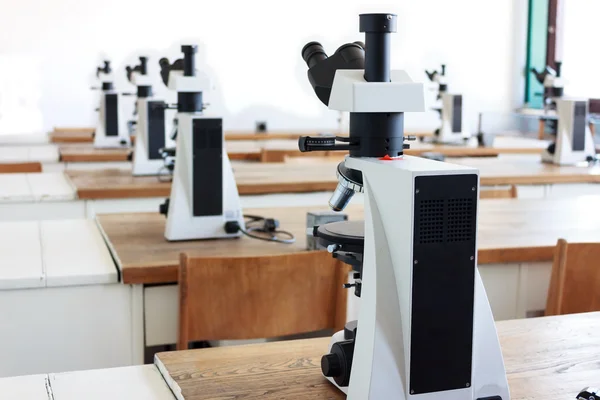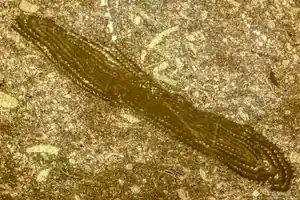-
How to prepare thin rock sections for sedimentology?
- Introduction
- Sample preparation for petrographic thin sections
- Scope and aims of microscopic examination
- Equipment required for sedimentological studies using a microscope.
- Optical properties of sedimentary rocks as viewed in transmitted light
- Reflectance levels and colour of sedimentary rocks as viewed in reflected light
- Physical properties at the microscopic scale that can be used to interpret the depositional environment
- Conclusion
How to prepare thin rock sections for sedimentology?
Introduction
The microscope is commonly used in sedimentology to analyse textures in rocks, minerals and fossils. It is most widely used to make thin sections of rocks, although other preparation methods, such as impregnating a polished block with resin, are also available.
Theory
- Theory of microscopy: This theory deals with the optical properties of the microscope, including its light source and lenses.
- Theory of optical properties: The theory of optics is a branch of physics that studies the behaviour and properties of light, including reflection, refraction, diffraction, interference and polarization.
- Theory of physical properties: Materials have specific characteristics that can be measured by techniques described in this section (e.g., density).
Sampling
Before you start, you must decide what sample you want to take. You can take samples from different levels of the rock, different parts of the rock, or even different rocks completely. This can be useful if your research focuses on a specific period or location.
By taking samples from various locations and environments (e.g., rivers, oceans, soil), you’ll see how sedimentary rocks impact their surroundings differently depending on their site.
Sample preparation for petrographic thin sections
The methods of preparing thin sections are well described in the literature, most notably in the texts by Urey and others (1942), Poldervaart (1944), and Krumbein (1970). These methods can be classified into three groups: freehand sawing, sawing with a diamond saw or grinding on an abrasive wheel. The first method is used when only one rock type is present in your sample; if multiple types of rocks are mixed, you should use either the second or third method. Reviewers have found that this method is rarely used because it results in many small chips instead of large slices from which to prepare a thin section. If you choose this method, however, be sure that your samples fit inside the microscope’s field of view so as not to waste time looking at pieces too small for analysis!
Scope and aims of microscopic examination
The scope of the microscopic examination of sedimentary rocks is to study their constituent minerals, grains and textures. The aims of microscopic examination are:
- To identify various mineral constituents present in the rock sample.
- To determine the proportions of different minerals in the rock sample.
- To study the sizes, shapes and arrangement (texture) of grains that make up a sedimentary rock sample on a microscopic scale.
Equipment required for sedimentological studies using a microscope.
You will need the following equipment:
A microscope with an eyepiece micrometre graticule and stage micrometre set at 0.1mm divisions to measure particle sizes in thin sections of heavy minerals (calcite rhombs). Alternatively, you may use an ordinary stereo microscope with two lenses (and two eyepieces) if there are no other microscopes available; however, this will not provide accurate results because it has only one lens instead of multiple lenses as in compound microscopes. A binocular-type microscope is recommended because it reduces eye strain during long observation periods and increases comfort during examination since both eyes are used simultaneously rather than one at a time (as in monocular or single-eyed users).

Optical properties of sedimentary rocks as viewed in transmitted light
The optical properties of sedimentary rocks are well documented but not often discussed in the context of a microscope or petrographic microscope. That is to say, we know that clastic sediments have a refractive index between 1.5 and 2.5, but sometimes we forget why this is important for our work with a microscope. Let’s examine some properties that can be observed with transmitted light:
- Refractive index
- Birefringence
- Double refraction
- Pleochroism
- Absorbance and reflectance
Reflectance levels and colour of sedimentary rocks as viewed in reflected light
The reflectance level measures the amount of light reflected from a surface. The scale ranges from 0 to 100%, with pure black at 0% and pure white at 100%. Most objects will have a reflectance value somewhere between these two extremes. Rocks vary widely in their reflectance values. For example:
- Sandstone (average = 50%) has less reflectance than limestone (average = 70%). This means you see less color in sandstone than limestone when observed under bright lighting conditions.
Physical properties at the microscopic scale that can be used to interpret the depositional environment
The physical properties of sediments, such as texture and fabric, are closely related to the processes that create them. The texture is the size distribution of particles within a sample (e.g., clay minerals or quartz sand). A sediment’s fabric reflects how grains are arranged about each other, which affects their strength and ability to resist deformation (i.e., resistance to being squeezed out of shape). Geometry refers to roundness (spherical) or elongation (rectangular), while mineralogy refers to the chemical composition of those grains. These factors affect how easily sediment can be moved by water or wind, an essential consideration for interpreting depositional environments.
The microscope is commonly used in sedimentology to analyse textures in rocks, minerals and fossils. It is most widely used to make thin sections of rocks, although other preparation methods, such as impregnating a polished block with resin, are also available.
Conclusion
Thus, the microscope is essential in studying sedimentary rocks and their fabric. It allows us to see details that would otherwise be invisible to the naked eye and understand how different sediments are deposited. The types of samples required for this analysis will depend on your research question or what kind of information you want to learn.


